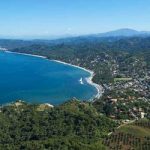Your Next Mexico Day Trip is to the Altavista Petroglyphs
The Altavista Petroglyphs are a must-see for anyone staying in Nayarit, Mexico. Whether you’re a history buff or just love an adventure away from your luxury villa to see something new, this is a day trip to remember.
The Altavista Petroglyphs complex can be found close to the beach-town village of Chacala. It is located south of the Compostela Municipality in a region known by many different names. Close to the Jaltemba Bay from the Pacific Ocean, you might hear this area called simply The Petroglyphs, or it could be called El Santuario, Chacalán, or La Pila del Rey.
What are the Altavista Petroglyphs?
The Altavista Petroglyphs are a direct result of the history of the region. Originally, the Tecoxquin people were nearly the only ones living here. Their culture ruled the area from about 2,000 BCE to around 2,300 BCE. During that time, the people left behind 56 petroglyphs that have survived to this day.
Later, but still before Spanish explorers landed here, the entire Compostela Municipality region was the home of the Mazatán people, which were a branch of the Xalisco-Zacualpan Kingdom.
The specific antiquity of the Altavista Petroglyphs is unknown. Besides the archeological and cultural significance, this location is also an important religious location for the Huicholes people. The Huicholes continue to use the area to perform their ceremonies and will leave offerings there.
What are the Altavista Petroglyphs
The Altavista Petroglyphs were created by the Tecoxquines, which means “throat cutters”, were an Aztec subgroup. They left images engraved in the volcanic stone near Las Piletas more than two thousand years ago. It isn’t known exactly what they are meant to represent or what purpose they served.
It is believed that they may have been symbolic of everyday life, such as the rains and weather, fertility, crops and health as a whole. While some feel the Altavista Petroglyphs were meant as offerings to the gods who controlled those parts of life, others thought they might be a part of prayer rituals. Some believe that neither of those theories are true.
Along the path to the Altavista Petroglyphs, you’ll find fifteen signs to guide you and inform you. They are available in both Spanish and English to help ensure that visitors will be able to understand what they are seeing and how to best experience the region. The area is, after all, quite a large one.








